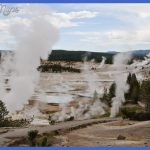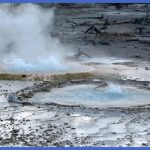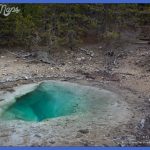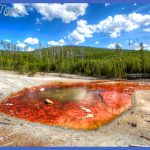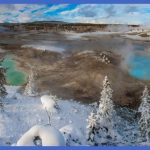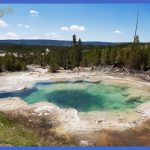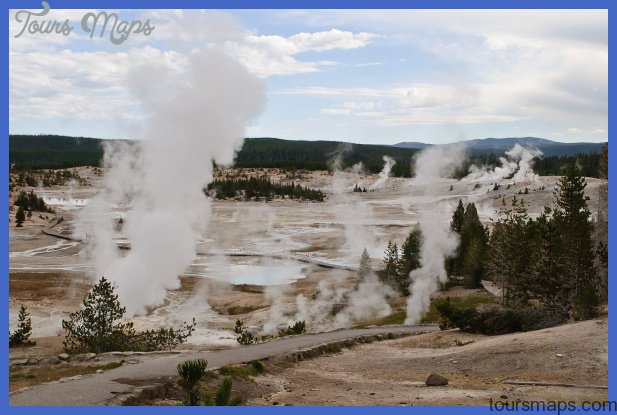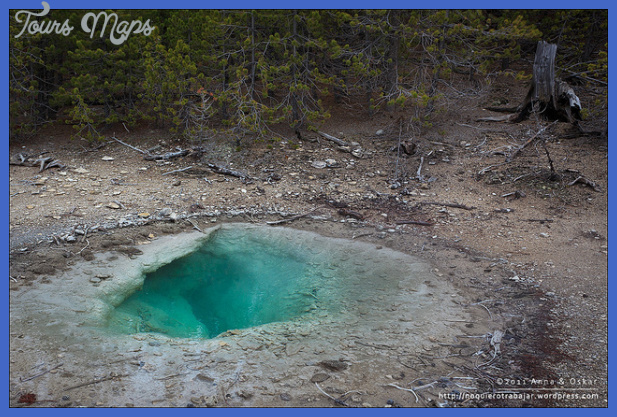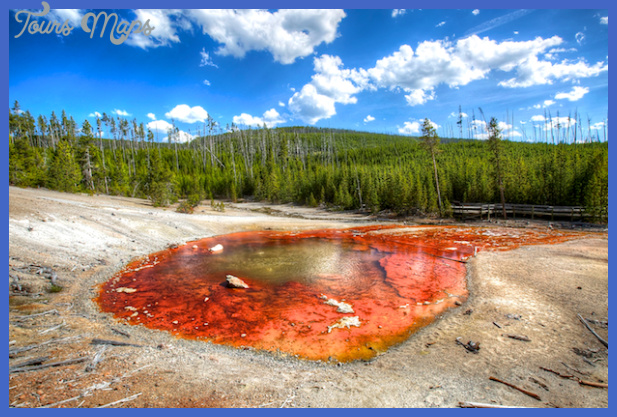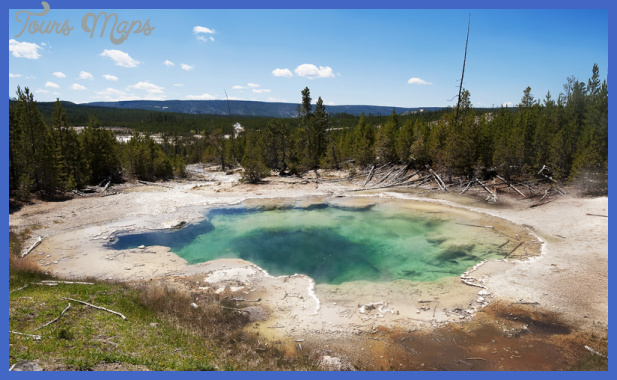Give yourself a few hours at Norris Geyser Basin for a walk through a thermal area very different from all the others in the park. A ranger-interpreter is often roving in Norris Geyser Basin during daylight hours, and it’s always worthwhile for a visitor to go along with him or her to learn what’s currently interesting in the basin. The features at Norris change so rapidly that only someone on the spot almost daily can keep up. S© (4) D The short Norris Geyser Basin side road goes directly west from Norris Junction. At road’s end, you’ll find restrooms and cold drink machines very welcome on a hot summer day. There are no restaurants, hotels, or grocery stores near this area. Down a short walkway from the parking lots are a small bookstore and the Norris Museum, built in 1930 and now a National Historic Landmark. Inside the museum, you’ll find displays about Yellowstone’s and other regions’ hydrothermal areas and history. A pamphlet about Norris’s trails and features is available from a dispensing box near the museum.
Precautions for a safe and pleasant geyser basin walk are in the Travel Tips, 358. What’s at Norris Geyser Basin? About 50 of the most easily seen and interesting hot springs, geysers, and mud pots are mentioned in this guidebook. Some have such irresistible names they beg to be listed. There are actually over 180 features here, according to geyser enthusiast Rocco Paperiello’s Report on the Norris Geyser Basin for 1984. Two steaming springs greet you before you even start on the basin walkways. To the east of the museum is rarely erupting Harding Geyser, named when it first erupted in 1923 for Pres. Warren G. Harding, who visited the park that year only a month before he died. Behind the bookstore is Steamvalve Spring (its ocial name, although the sign says Steam Valve Geyser). Have you wondered while visiting the park how engineers have managed to avoid placing roads and buildings in the path of hydrothermal activity? Steamvalve Spring is an example of a place they misjudged. Here a seemingly dead mud hole has been filled with asphalt twice, only to come bursting through with renewed activity, erupting frequently with extraordinary rumbling noises. No more asphalt has been applied! Loop trails divide the area open to visitors into two parts, Back Basin and Porcelain Basin.
Relatively remote areas called the One Hundred Spring Plain and the Gap are hot, active, wet, and dangerous; therefore, they are not furnished with boardwalks. Back Basin is where you’ll find the sometimes predictable Echinus Geyser and Yellowstone’s tallest (but notoriously erratic) geyser, Steamboat. The entire Back Basin loop is about 1.5 miles (2.4 km) around, with part of it wheelchair-accessible. Porcelain Basin is a vast, delicately tinted plain with many small geysers, hot springs, lakes, and fumaroles. The western loop around this area and the walkway to Porcelain Terrace on the east side are each about 0.5 miles (0.8 km) long. Part of the eastern walkway is wheelchair-accessible.
Norris Geyser Basin Photo Gallery
Maybe You Like Them Too
- The Best Cities To Visit in The World
- World’s 10 Best Places To Visit
- Coolest Countries in the World to Visit
- Travel to Santorini, Greece
- Map of Barbados – Holiday in Barbados

